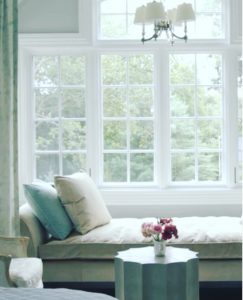By Barbara Ficarra, RN, BSN, MPA

The topic of sleep seems to be everywhere now. It’s a popular topic and it’s getting a lot of attention. Lack of sleep is a public health problem. The proper amount of sleep is essential to good health. According to the Centers for Disease Control and Prevention (CDC) 1 in 3 adults don’t get enough sleep.
Lack of sleep can wreak havoc on your health, and according to the National Institutes of Health – National Heart, Lung, and Blood Institute, “Ongoing sleep deficiency is linked to an increased risk of heart disease, kidney disease, high blood pressure, diabetes, and stroke.”
“Sleep deficiency also has been linked to depression, suicide and risk-taking behavior.” Sleep can also help repair your heart and blood vessels.
Sleep helps you stay focused and can help you make better decisions. If you’re not getting enough sleep you may have trouble controlling your emotions and behavior, have difficulty making decisions, and problems coping with change and solving problems.
How much sleep do you need?
Do you know how much sleep you should be getting each night? It’s recommended that adult get between 7 – 8 hours of sleep each night.
So if you’re not getting enough zzz’s, these healthy design tips may help.
Healthy design tips for better sleep

Calming bedroom with soft colors ~ Healthy Design Tips for Better Sleep by Barbara Ficarra, RN, BSN, MPA | Health Designer™
- Design your bedroom so it’s your oasis. Create a relaxing, cozy, calming, and clutter-free bedroom. Use soft colors. Think about the calming and soothing colors of the ocean such as shades of blue, taupe and gray. Good design should reflect you. It’s important that you choose colors that you love. Colors that will spark joy and a good night’s rest.
- Have a relaxing bedtime routine each night. Take a warm shower or bath, listen to soft soothing music.
- Go to bed the same time each night.
- Take out the technology. Put your devices in another room. This way you won’t be tempted to use them, and no TVs.
- Darken the room.
- Wear a sleep/eye mask. (Side note: some hospitals give their patients sleep/eye masks because they know the importance of sleep and want their patients to sleep if they can.)
- Stretch before bed. Try these simple stretches. Hip Bridge and Warrior Balance.
- White noise may help you get your zzz’s. Listening to soothing sounds like ocean waves or raindrops may help.
- Lavender an essential oil has a pleasant aroma and can be relaxing. Use a diffuser (if you have an electric one, make sure that it’s turned off before you get into bed–don’t keep it turned on during the night).
- Keep your bedroom at a comfortable sleeping temperature. Choose a temperature between 60 and 67 degrees Fahrenheit.
- Avoid large meals, caffeine, alcohol and nicotine before bed.
- If you have trouble sleeping, keep a sleep journal (write in your sleep journal before you get into bed, and in another room) and share it with your doctor or other health care professional. (More on what to include in your sleep journal may be found here.)
(If you’re concerned about your sleep habits and you recognize that it’s disruptive, always talk to your doctor, nurse practitioner or other health care professional. Write your questions down or add to your questions to your device. This way you can have all your questions answered.)

Healthy Design Tips for Better Sleep by Barbara Ficarra, RN, BSN, MPA | Health Designer™
For more of my Healthy Design Tips for Life and Home, please tap here on my Instagram or there’s more at BarbaraFicarra.com.
Sign up for free newsletters filled with chic healthy design tips.
Stay Connected with Barbara
Design your healthy and happy life and home.-bf
—
Centers for Disease Control and Prevention (CDC)
National Heart, Lung, and Blood Institute (NIH)
BarbaraFicarra.com-Sleep
Houzz.com
HuffPost
—
